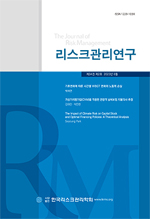- 영문명
- Evaluation of the Reverse Mortgage with Bequest Motive and its Opt-in Strategy: From the Perspective of the Roles of the Reverse Mortgage
- 발행기관
- 한국리스크관리학회
- 저자명
- 여윤경 양재환
- 간행물 정보
- 『리스크관리연구』29권 1호, 33~87쪽, 전체 55쪽
- 주제분류
- 경제경영 > 경영학
- 파일형태
- 발행일자
- 2018.03.31
9,400원
구매일시로부터 72시간 이내에 다운로드 가능합니다.
이 학술논문 정보는 (주)교보문고와 각 발행기관 사이에 저작물 이용 계약이 체결된 것으로, 교보문고를 통해 제공되고 있습니다.

국문 초록
최근 주택연금의 가입자 수가 크게 증가하는 등 주택연금에 대한 관심이 높아지고 있다. 그러나 상속의지가 강한 국내 고려층은 자식에 대한 재산 상속의 어려움을 이유로 주택연금 가입을 꺼리는 실정이다. 즉, 주택연금 가입에 있어서 상속은 중요한 의사결정 요인이라는 것이다. 하지만 많은 기존 주택연금 관련 연구들은 주택연금이 가지는 상속의 기능을 제외하고 주택연금의 혜택을 분석하였다. 이에 본 연구에서는 주택연금의 기대효용가치 평가모형에 상속동기를 포함시키고, 상속동기의 강도를 변화가 기대효용가치의 변화에 미치는 영향을 분석하고자 하였다. 즉, 주택연금에서 상속동기의 강도가 주택연금의 기대효용가치에 미치는 영향을 분석하였다. 구체적으로 주택연금의 가입여부, 가입연령, 주택가격, 일반연금액 보유수준, 주택 외 순자산 보유수준에 따라서 상속동기의 강도가 기대효용에 어떠한 영향을 미치는가를 분석하였다. 또한 상속동기의 강도가 주택연금의 장수리스크 완화효과로 정의된 가입효과에 미치는 영향도 확인하였다. 주요 결과로는 첫째, 기대효용가치 평가에서 상속동기를 반영한 주택연금의 가치는 예상대로 증가하였다. 또한 상속동기 강도 증가에 따른 효용증가율 측면에서는 정액형이 전후후박형과 우대형보다 유리한 것으로 나타났다. 둘째, 총기대효용 측면에서는 주택연금의 가입연령이 낮을수록 유리하게 나타났지만 상속동기 반영에 따른 효용증가율은 가입연령이 높을수록 더 높게 나타났다. 마지막으로 상속동기의 강도가 높을수록 주택연금의 가입효과는 감소하는 것으로 나타났다.
영문 초록
Recently, the reverse mortgage loan system in Korea (JooTaek YeonKeum, JTYK) has attracted a lot of attentions as its number of opting-in cases increases dramatically. But, many Korean elderlies, who have strong bequest motive, are still avoiding the JTYK because opting-in the JTYK often implies less or no bequeathed wealth for their children. That is, the bequest is an important issue when opting-in the JTYK is considered. However, a lot of studies regarding the JTYK have analyzed benefits of the JTYK without considering the bequest feature included in the JTYK. In this study, we include the bequest motive in the expected utility evaluation model and examines the effects of the strength of bequest motive on the expected utility value earned from the JTYK. In details, we analyze the effect of the status change such as opting-in or not opting-in the JTYK and various opting-in age, value of house, value of general pension and net wealth value except for the house on expected utility value as the strength of bequest motive changes. Finally, we measure the benefit of opting-in the JTYK, which is defined as the longevity risk alleviation, with different strength values of bequest motive. As results, first if we include the bequest motive in the expected utility model, then the expected utility value is increased as expected. Also, in terms of utility rate increase the fixed payment scheme performs better than both the two-phased payment scheme and the preferential payment scheme. Second, in terms of total expected utility, it is more beneficial if people opt-in the JTYK as early as possible but in terms of utility rate increase, it is better if the opting-in timing is as late as possible. Finally, as the strength of bequest motive increases, the longevity risk alleviation effect by the JTYK decreases.
목차
Ⅰ. 서론
Ⅱ. 선행연구 동향
Ⅲ. 연구 방법
Ⅳ. 결과 및 논의
Ⅴ. 결론 및 시사점
참고문헌
해당간행물 수록 논문
참고문헌
관련논문
경제경영 > 경영학분야 BEST
더보기경제경영 > 경영학분야 NEW
- 리스크관리연구 36권 3호 목차
- Signaling in the Supply Chain: Can Climate Risk Disclosure Mitigate the Bullwhip Effect? Evidence from China
- 보험회사의 사회공헌활동이 보험계약유지율에 미치는 영향
최근 이용한 논문
교보eBook 첫 방문을 환영 합니다!

신규가입 혜택 지급이 완료 되었습니다.
바로 사용 가능한 교보e캐시 1,000원 (유효기간 7일)
지금 바로 교보eBook의 다양한 콘텐츠를 이용해 보세요!



